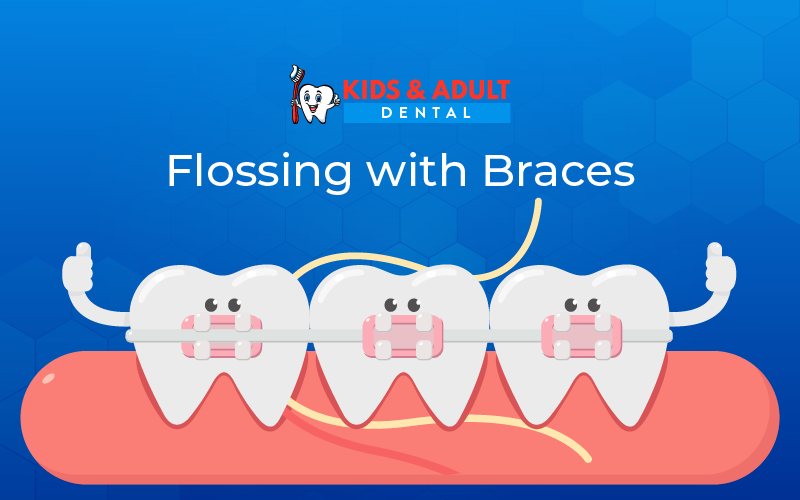Maintaining proper oral hygiene during orthodontic treatment is paramount to ensure the health and longevity of your teeth and gums. One essential aspect of oral care that should not be overlooked when wearing braces is flossing.
Flossing with braces presents its own set of challenges, but with the right knowledge and techniques, it is entirely possible to maintain a healthy oral environment throughout your orthodontic journey.
Why Flossing with Braces is Essential for Maintaining Healthy Teeth and Gums?
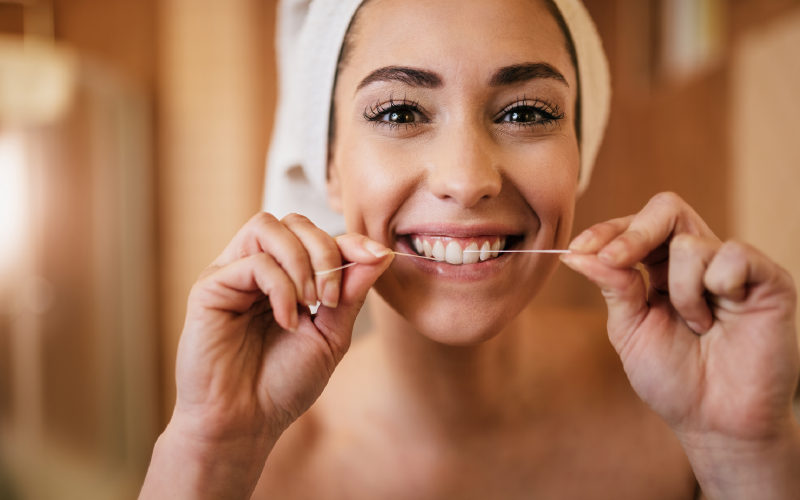
Flossing with braces is not just a suggestion, but a crucial step in maintaining healthy teeth and gums during orthodontic treatment.
The presence of braces creates additional spaces where food particles and plaque can accumulate, leading to an increased risk of tooth decay, gum inflammation, and other oral health issues.
While brushing your teeth is important, it alone cannot reach the tight spaces between your teeth and braces. When it comes to this, flossing is important.
By flossing with braces, you effectively remove plaque and food debris from these hard-to-reach areas, preventing the buildup of harmful bacteria.
The interdental spaces between your teeth and around the brackets and wires are breeding grounds for bacteria, which can lead to cavities, enamel erosion, and gum disease if not addressed.
Flossing with braces also promotes healthy gums. When food particles and plaque are trapped between your teeth and braces, they can irritate and inflame the gums, leading to gingivitis.
Regular flossing helps eliminate these irritants, reducing the risk of gum inflammation and maintaining healthy gum tissue.
Preparing for Flossing with Braces

Before you begin your flossing routine with braces, it’s essential to gather all the necessary supplies. Having everything readily available will streamline the process and ensure that you don’t miss any crucial steps.
Here are the supplies you’ll need for effective flossing with braces:
1. Dental Floss
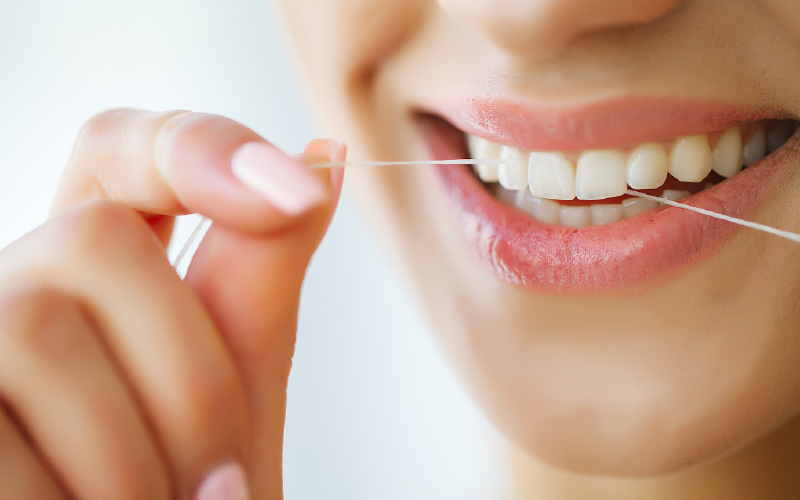
Dental floss is a thin thread-like material that helps remove plaque, food particles, and bacteria from between your teeth and along the gumline. It is designed to fit into tight spaces, making it an essential tool for maintaining oral health.
Look for dental floss that is suitable for use with braces, such as waxed floss or floss with a stiffened end.
2. Floss Threaders
Floss threaders are small, flexible plastic tools that assist in threading the dental floss under the archwire of your braces.
They allow you to navigate the floss between your teeth and around the brackets, ensuring comprehensive cleaning.
Floss threaders make it easier to access areas that may be difficult to reach with regular flossing techniques.
3. Orthodontic Flossers
Interdental brushes are small, cone-shaped brushes that are designed to clean the spaces between your teeth and around your braces. They can be particularly helpful for removing trapped food particles and plaque in tight areas.
Interdental brushes come in various sizes to accommodate different gaps between teeth and brackets.
4. Interdental Brushes
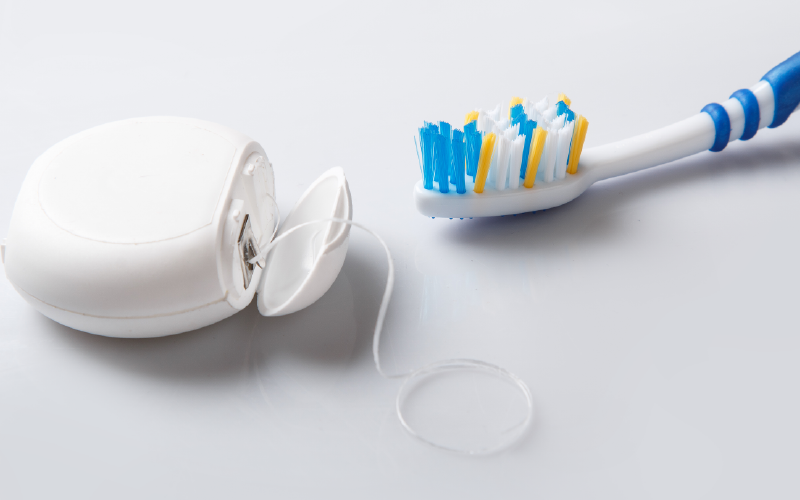
Interdental brushes are small, cone-shaped brushes that are designed to clean the spaces between your teeth and around your braces.
They can be particularly helpful for removing trapped food particles and plaque in tight areas.
Interdental brushes come in various sizes to accommodate different gaps between teeth and brackets.
5. Water Flosser
An oral irrigator, commonly referred to as a water flosser, is a tool that uses a stream of water to clean in and around your braces and between your teeth.
It can be a valuable addition to your flossing routine, providing an alternative method for removing debris and promoting oral health.
Water flossers are especially useful for individuals who have difficulty using traditional floss or have sensitive gums.
Read Also: Essential Tips to Prevent Dry Socket After Tooth Extraction
Techniques for Properly Cleaning your Hands Before Flossing

Properly cleaning your hands before flossing is an essential step to maintaining hygiene and preventing the introduction of harmful bacteria into your mouth.
Here are some techniques to ensure your hands are clean and ready for flossing:
- Wash with soap and water, covering all areas for 20 seconds.
- Pay attention to your fingertips and rub them against your palm.
- Rinse hands thoroughly under running water.
- Use a fresh towel to dry or let it air dry.
- Avoid touching unsanitary surfaces before flossing.
Step-by-Step Guide to Flossing with Braces
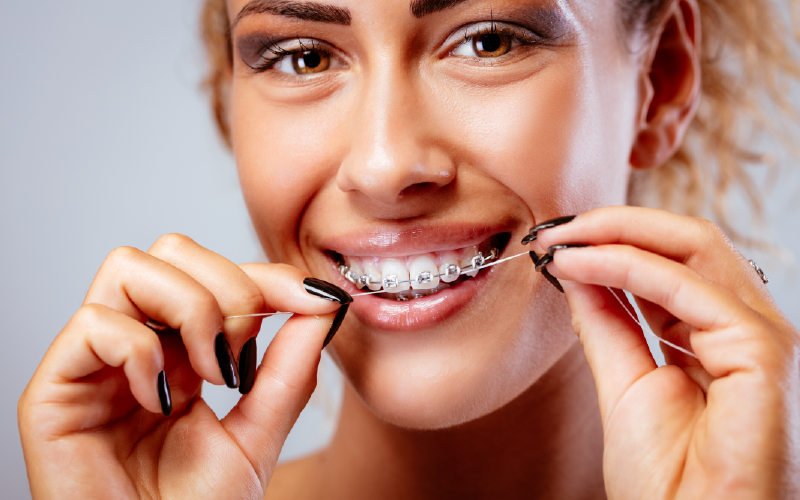
Flossing with braces requires a slightly different approach compared to traditional flossing.
Here is a step-by-step instruction manual to assist you with the procedure.
- Start by selecting the type of floss that suits your needs, such as waxed floss or floss with a stiffened end. These variations are designed to make flossing with braces easier and more effective.
- Take a length of floss that is between 18 and 24 inches.
- This length will give you enough floss to work with as you move between each tooth.
- Gently thread the floss under the archwire. To do this, insert the floss between two teeth, moving it up and down until it reaches the gumline. Be careful not to apply too much force to avoid damaging the wires or brackets.
- Once the floss is under the archwire, hold the floss tightly against the tooth and move it up and down in a gentle sawing motion. This motion helps remove plaque and debris from the tooth surface and the area around the braces.
- After cleaning one tooth, carefully remove the floss and thread it under the archwire to reach the next tooth. Repeat the flossing process for each tooth, moving systematically around your mouth.
Read Also: When it’s Time for Wisdom Tooth Removal
Exploring Different Flossing Techniques
When it comes to flossing with braces, there are different techniques you can explore to find the one that works best for you. Let’s take a closer look at three common flossing techniques:
Traditional Flossing
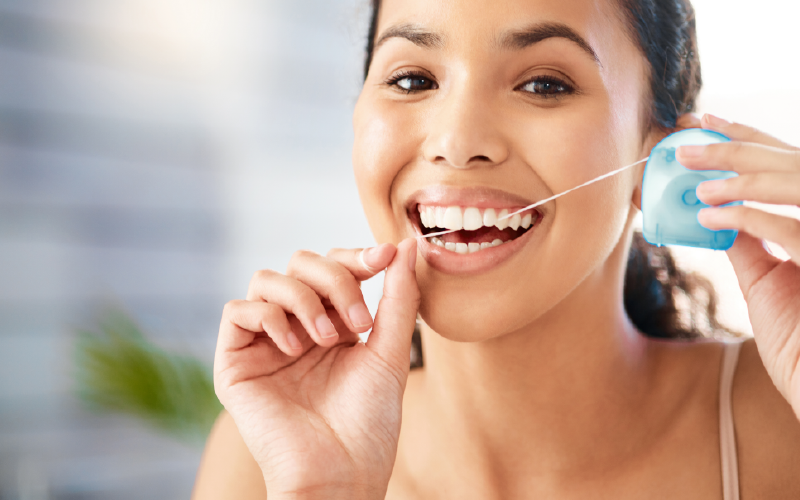
Traditional flossing involves using regular dental floss to clean between your teeth and around the braces. Here’s how to do it:
- Cut a piece of floss that is about 18 to 24 inches long.
- Thread the floss carefully under the archwire, using your fingers to guide it between your teeth.
- Gently move the floss up and down, forming a “C” shape around each tooth. Make sure to clean both sides of the tooth and the area beneath the gumline.
- To prevent spreading plaque, use a new section of floss for every tooth.
Floss Threaders
Floss threaders are useful tools that help thread the floss under the archwire, making it easier to clean between the teeth and around the braces. Use a floss threader by following these instructions.
- Cut a floss piece that is between 18 and 24 inches long.
- One end of the floss should be threaded through the floss threader’s loop.
- Guide the floss threader under the archwire and pull the floss through.
- Hold the floss on both ends and slide it between your teeth cleaning the sides of each tooth in a back-and-forth motion.
- Utilizing a new piece of floss, repeat the procedure for every tooth.
Orthodontic Flossers
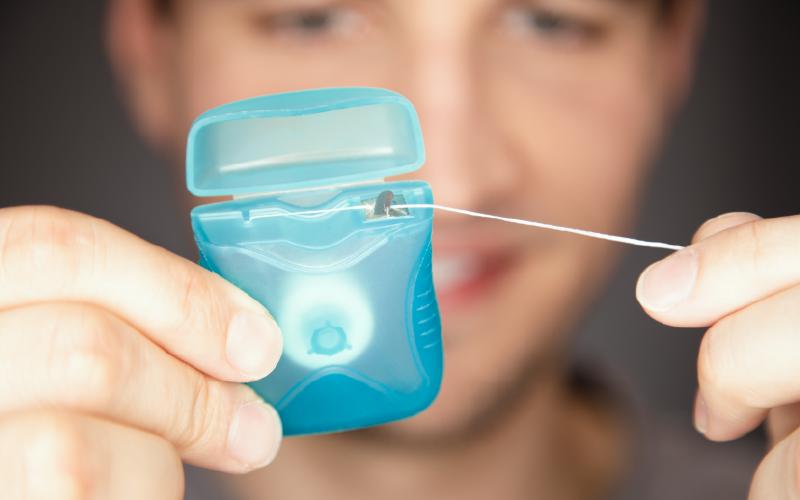
Orthodontic flossers are pre-threaded flossing devices designed specifically for use with braces. They offer convenience and ease of use. How to use an orthodontic flosser is shown here.
- Hold the orthodontic flosser with a firm grip.
- Insert the flosser between your teeth, guiding it around the brackets and under the archwire.
- Gently move the flosser back and forth, making sure to clean both sides of each tooth and the gumline.
- Use a new flosser for each tooth.
Effective Flossing Tips for Braces
- Be gentle yet thorough: Apply gentle pressure while flossing to avoid damaging braces, but be thorough in cleaning between teeth and around brackets.
- Use interdental brushes or water flossers: These tools can complement flossing, reaching hard-to-reach areas and providing additional cleaning.
- Maintain consistency: Floss daily, setting a schedule and sticking to it for optimal plaque control and oral health.
- Focus on technique: Clean both sides of each tooth and the gumline with proper flossing technique, taking your time for thorough cleaning.
- Seek professional guidance: Consult your orthodontist or dentist for personalized advice and product recommendations.
- Maintain overall oral hygiene: Brush thoroughly, including around braces, and consider using mouthwash or antibacterial rinses.
Follow these tips to enhance your flossing routine with braces and promote healthy teeth and gums throughout treatment.
Read Also: The Amazing Benefits of Flossing Your Teeth
Brushing Techniques for Braces
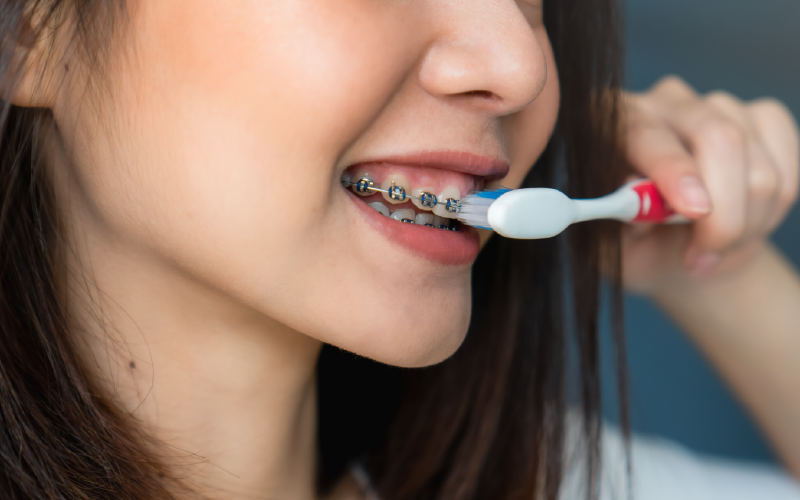
Brushing techniques for braces require special attention to ensure effective cleaning and prevent plaque buildup.
Here are some brushing techniques to follow when you have braces
-
Start with a Soft-Bristled Toothbrush
Choose a toothbrush with soft bristles to avoid damaging the braces and your gums. Cleaning around braces can also be accomplished with electric toothbrushes.
-
Rinse your Mouth
Before brushing, rinse your mouth with water to remove any loose food particles.
-
Angle your Brush
Hold your toothbrush at a 45-degree angle and position the bristles at the gum line. This angle helps you clean both the teeth and the braces effectively.
-
Clean Around the Brackets
Clean each bracket individually by making small circular motions with your toothbrush. Be gentle and thorough to remove plaque and food particles.
-
Brush the Front and Back of the Teeth
Move the bristles of your toothbrush up and down to clean the front and back surfaces of your teeth.
-
Brush the Gumline
Pay special attention to the gumline, as plaque can easily accumulate there. Gently brush along the gumline to remove any buildup.
-
Clean Between Wires and Teeth
Use an interdental brush or floss threader to clean between the wires and teeth. Thread the floss or brush under the wire and clean around each tooth.
-
Brush the Chewing Surfaces
Don’t forget to brush the chewing surfaces of your teeth as well. Use a back-and-forth motion to clean these areas.
- Rinse and Check
After brushing, rinse your mouth thoroughly to remove any remaining toothpaste or debris. Check for any missed areas in a mirror.
- Use Mouthwash
Consider using an antimicrobial mouthwash to help kill bacteria and freshen your breath. Consult your orthodontist for recommendations.
Related Post: Reasons Why Retainers Are Important After Braces
Conclusion
Don’t panic if you have braces; flossing is still an option. We’ve provided you with a comprehensive guide on how to effectively floss with braces.
By following the tips and techniques outlined in this article, you’ll be equipped to keep your teeth and gums healthy.
At Kids & Adult Dental, we recognize the significance of maintaining a healthy smile. As a leading best dentist in littleton colorado, we are committed to delivering outstanding care for individuals of all ages.
Contact us today to book an appointment and discover the excellence of our affordable dental services in Colorado.
Keep in mind that, armed with the proper knowledge, tools, and expert guidance, you can confidently navigate the process of flossing with braces, ensuring that your smile remains vibrant, healthy, and radiant every step of the way.

